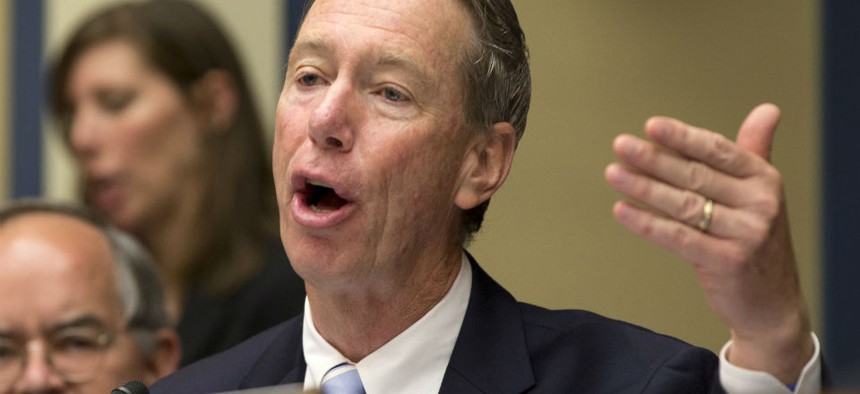
Rep. Stephen Lynch, D-Mass., says OPM is moving too slowly in reducing the retirement claims backlog. AP file photo
Retirement Wait Times Drop, But OPM Still Falls Short of Goals
Major IT overhaul of claims processing to begin in 2015.
Lawmakers and stakeholders at a congressional hearing Wednesday praised the Office of Personnel Management for processing federal employees’ retirement claims more quickly, but still chastised the agency for falling short of its own goals.
Two OPM officials defended their progress to the House Oversight and Government Reform Committee’s federal workforce panel and said upcoming modernization programs will further reduce the wait time between an employee filing for retirement and receiving his or her pension payments. Lawmakers and federal employee groups alike struck a conciliatory tone at the short and lightly attended hearing, offering optimism and promises to work with OPM.
OPM said it is now processing 83 percent of retirement claims within 60 days, a statistic it only recently began measuring. While the human resources agency has shown progress, it is behind schedule to reach its goal of 90 percent expedited processing. OPM has reduced the overall backlog from 60,000 claims in January 2012 to just 14,000 at the beginning of December. Still, lawmakers expressed concern that the agency is falling behind schedule and that some federal employees are still waiting more than six months for their annuities to kick in.
“We’re going too slow right now, and that concerns me,” said Rep. Stephen Lynch, D-Mass., ranking member of the federal workforce subcommittee.
Ken Zawodny, OPM’s associate director of Retirement Services, said a huge burden on claims processing will be lifted once the agency acquires a case management system to track and report on documents and cases as they are processed. OPM will issue a request for proposals next year, Zawodny said, which will allow the agency to estimate how much money it will need from Congress to implement the system. The system is to include a first-of-its-kind online retirement application tool.
Rep. Blake Farenthold, R-Texas, expressed skepticism about OPM’s ability to implement a digital program for retirement processing, saying the “federal government has a hard time computing its way out of a paper bag.” He still expressed support for OPM’s modernization efforts.
OPM has overseen many stalled efforts to overhaul and digitize the retirement processing system in last couple of decades. Valerie Melvin, who audits technology issues at the Government Accountability Office, said OPM would have to follow best practices in tech procurement and implementation to avoid its past mistakes.
Doing so will allow OPM to “overcome a long history of unsuccessful attempts to modernize the retirement processing system,” Melvin said.
Lynch and Farenthold said they are committed to giving OPM the tools it needs to improve retirement processing.
“These last few years have been especially hard on federal employees who have had to endure an onslaught of attacks from some members of Congress on their pay, benefits and due process rights,” Lynch said. “So, I am glad that Chairman Farenthold and I can agree that Congress and OPM must ensure that our federal employees receive timely and accurate pension payments upon their retirement.”







